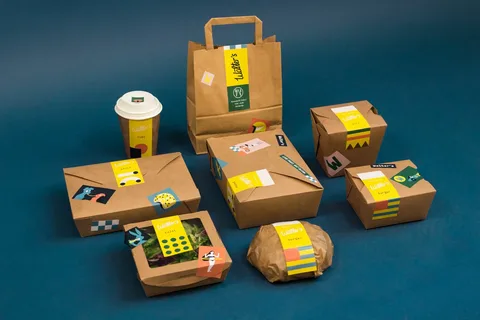Creating custom food packaging boxes with your logo is an essential step for branding your food products. High-quality packaging not only protects your items but also enhances brand recognition and attracts customers. Here’s a comprehensive guide on how to design and produce custom food boxes effectively.
1. Define Your Packaging Requirements
Identify Your Product Type
Start by understanding the specific needs of your food products. Consider:
- Product Dimensions: Measure the size and shape of your items to determine the right box dimensions.
- Weight: Ensure the packaging can support the weight of the food without compromising its integrity.
- Shelf Life: Choose materials that help preserve freshness, especially for perishable items.
Consider Packaging Regulations
Familiarize yourself with local food packaging regulations, which may include requirements for labeling, materials, and safety standards. Compliance is crucial to avoid legal issues and ensure consumer safety.
2. Choose the Right Materials
Selecting the appropriate materials for your food packaging boxes is vital for both functionality and aesthetics.
Food-Safe Materials
Opt for materials that are safe for food contact, such as:
- Cardboard: Ideal for dry products like snacks, cereals, and baked goods.
- Kraft Paper: Eco-friendly and biodegradable, suitable for various food items.
- Plastic: Use food-grade plastic for items requiring moisture barriers, like frozen or wet foods.
Durability and Insulation
Consider materials that offer durability and insulation properties, especially if your products require temperature control or protection during shipping.
3. Design Your Packaging
Create a Visual Concept
Develop a visual concept for your packaging that aligns with your brand identity. This includes:
- Color Schemes: Choose colors that reflect your brand’s personality and appeal to your target audience.
- Fonts and Graphics: Select fonts that are easy to read and graphics that are visually appealing and relevant to your product.
Incorporate Your Logo
Your logo is a vital element of your branding. Ensure it is prominently displayed on the packaging. Consider the following:
- Placement: Decide where the logo will be most visible (e.g., front, top, or side).
- Size: Ensure your logo is large enough to be recognized but balanced with other design elements.
Design Software
Use design software like Adobe Illustrator, Canva, or other graphic design tools to create your packaging layout. Many online printing companies also offer templates to make the process easier.
4. Choose a Printing Method
Digital Printing
Ideal for small runs or prototypes, digital printing offers flexibility and lower setup costs. It’s perfect for businesses that require quick turnaround times.
Flexographic Printing
This method is suitable for larger production runs and offers high-quality prints at a lower cost per unit. Flexographic printing is commonly used for food packaging due to its efficiency and quality.
Consider Printing Partners
Research and choose a reputable printing partner that specializes in food packaging. Request samples of their work to assess quality and ensure they can meet your requirements.
5. Test Your Packaging
Before committing to a large order, conduct tests to ensure your packaging meets all functional and aesthetic requirements.
Prototype Development
Create prototypes of your packaging to evaluate:
- Design: Check the visual appeal and ensure it reflects your brand accurately.
- Functionality: Test how easy it is to open, close, and store the packaging.
- Protection: Ensure the packaging adequately protects the food during storage and transport.
Gather Feedback
Obtain feedback from potential customers or focus groups. Their insights can help refine your design and address any issues before the final production.
6. Place Your Order
Once you’re satisfied with the design and functionality of your custom food packaging boxes, place your order with your chosen printing partner. Be sure to confirm:
- Quantities: Determine the number of boxes needed based on your sales projections.
- Lead Times: Understand the production timeline to plan your inventory accordingly.
- Shipping Details: Discuss shipping options and costs to ensure timely delivery.
7. Market Your Packaging
Once your custom packaging is ready, leverage it in your marketing strategies. Highlight your unique packaging on social media, your website, and in promotional materials. Eye-catching packaging can drive consumer interest and encourage purchases.
Conclusion
Creating custom food packaging boxes with your logo is a strategic way to enhance your brand presence and improve customer engagement. By carefully considering your packaging requirements, selecting the right materials, designing thoughtfully, and collaborating with your box packaging, you can produce attractive and effective packaging that resonates with your audience.
